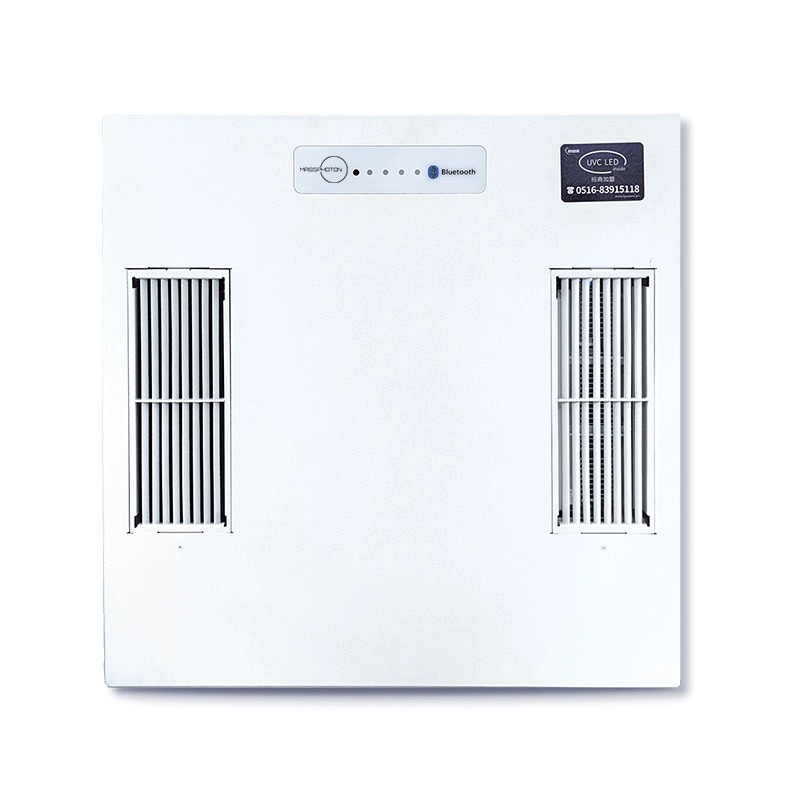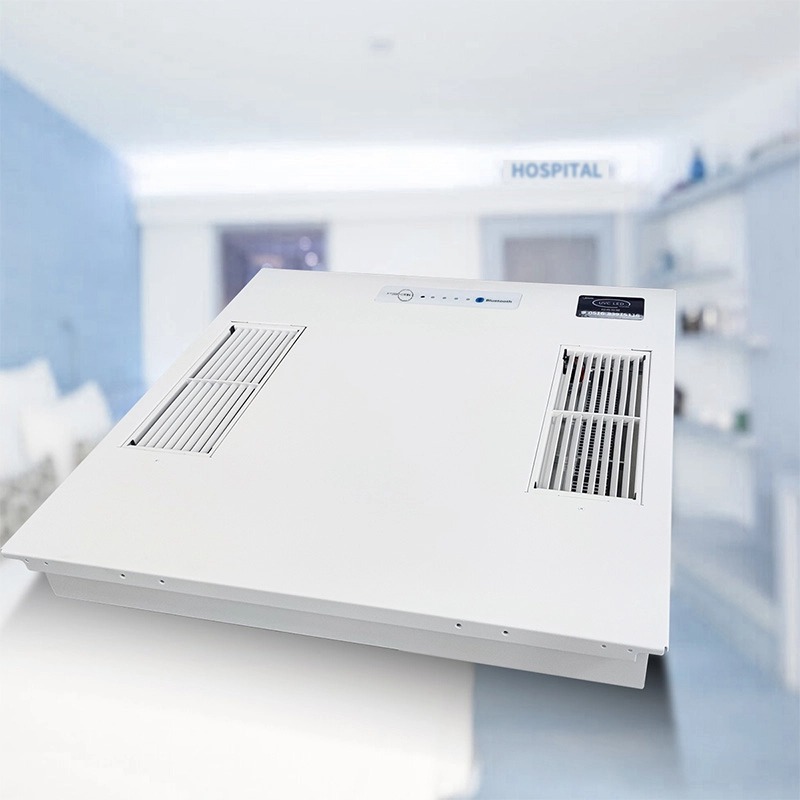Author: Site Editor Publish Time: 17-09-2025 Origin: Site











Unpleasant odors are one of the most common indoor air quality complaints, whether in homes, offices, or healthcare facilities. While candles, sprays, and air purifiers can mask or filter smells, many people are now turning to advanced technologies like the UVC Air Disinfection System to improve both air quality and comfort. But the big question remains: Does a UVC Air Disinfection System get rid of smells—or is its role purely microbial disinfection?
At its core, a UVC Air Disinfection System uses short-wavelength ultraviolet light (UVC, typically around 254 nm) to neutralize microorganisms like bacteria, viruses, and mold spores. When these microbes are exposed to UVC radiation, their DNA or RNA is disrupted, rendering them inactive and unable to reproduce.
What’s important to note here is that UVC does not act as a chemical or fragrance—it doesn’t mask smells like air fresheners do. Instead, it eliminates biological sources of odor by targeting the microbes that produce them.
| Aspect | Traditional Air Freshener | UVC Air Disinfection System |
|---|---|---|
| Method | Masks odor with scent | Neutralizes microbes at DNA level |
| Effect on Smell | Temporary cover-up | Removes smells caused by microbes |
| Air Quality | Unchanged or worsens | Improved with lower microbial load |
This distinction sets the stage for evaluating whether a UVC Air Disinfection System is effective in odor control.

The short answer is: No, but it depends on the source.
Effective Against: Odors caused by mold, mildew, bacteria, and some viruses. For example, the musty smell in a damp basement or the “hospital smell” from microbial presence can be significantly reduced when those microbes are neutralized.
Not Effective Against: Non-biological odors such as cigarette smoke, chemical fumes, paint, pet urine stains, or food that has spoiled but left volatile compounds in the air. These smells come from chemical compounds that UVC light cannot break down.
This means if your odor problem is microbial in nature, UVC can be an excellent solution. If it’s chemical-based, additional filtration or adsorption technologies (like activated carbon filters) are required.
While UVC light doesn’t “zap” smells directly, its impact on microbial colonies plays a huge role in how odors evolve indoors. For example:
Mold Odor: Mold spores release microbial volatile organic compounds (mVOCs) that create a musty smell. A UVC Air Disinfection System reduces mold spore survival, lowering the release of these compounds.
Bacterial Odors: Bacteria in HVAC coils or damp areas can cause sour or unpleasant smells. UVC prevents bacteria from thriving in these environments.
Hospital and Lab Applications: In sterile environments, UVC is used not only for infection control but also to keep air free from microbial odors that can be disruptive or unpleasant.
This explains why facilities with high UVC integration often report “fresher-smelling” air, even though the system isn’t an odor neutralizer per se.
To really answer whether a UVC Air Disinfection System helps with smells, it’s useful to compare it with other common technologies:
| Technology | How It Works | Effectiveness on Smell | Best Use Case |
|---|---|---|---|
| UVC Air Disinfection System | Inactivates microbes with UV light | Strong for microbial odors | Healthcare, offices, homes with mold issues |
| HEPA Filtration | Captures particles down to 0.3 microns | Removes odor-causing particles, not gases | Dust, pollen, some odor particles |
| Activated Carbon Filter | Adsorbs gases and VOCs | Excellent for chemical and smoke odors | Smoke, paint, chemical-heavy environments |
| Ionizers/Ozone Generators | Produces charged ions/ozone | Can mask or oxidize odors, sometimes unsafe | Industrial odor treatment (with caution) |
The takeaway: a UVC Air Disinfection System is best viewed as part of a layered approach. It excels in eliminating odors with microbial roots but works best when combined with other filtration systems for a full-spectrum odor solution.
People often notice fresher-smelling air after installing UVC systems in specific scenarios:
Damp Basements: Reduced mold growth leads to noticeably less musty smell.
HVAC Systems: Installing UVC near coils prevents biofilm buildup, reducing “dirty sock syndrome.”
Healthcare Facilities: Sterile air smells cleaner because microbial odors are minimized.
Food Storage Areas: Reduces bacterial contamination, which lowers odor intensity.
These improvements are indirect—achieved by reducing microbial populations, not by neutralizing all smell molecules.
While effective in specific situations, there are clear limits to what UVC Air Disinfection Systems can do for odors:
No Impact on VOCs: Volatile organic compounds from chemicals, paints, or cooking smells remain unaffected.
No Direct Scent Neutralization: UVC doesn’t “freshen” the air with fragrance or absorb gases.
Depends on Installation: If placed incorrectly in HVAC systems, UVC may not reach the microbes causing the smell.
Time Factor: Odor reduction may take days or weeks as microbial populations decline.
For best results, UVC should be paired with HEPA and carbon filters to achieve both microbial and chemical odor control.

If odor control is your main motivation, here are actionable tips:
Identify the Source: Test whether the smell is microbial (mold, bacteria) or chemical (paint, smoke).
Combine Technologies: Use UVC with carbon filters for comprehensive odor control.
Target HVAC Systems: Installing UVC LED strips at coils and drain pans prevents biofilm—the root cause of many building odors.
Regular Maintenance: Replace filters and clean air ducts to maximize results.
Consider Room Size: Choose a UVC system sized for your space; undersized units won’t effectively reduce microbes.
By following these steps, users often report both fresher air and noticeable odor reduction.
The UVC Air Disinfection System is only for odors with microbial origins. It doesn’t directly neutralize chemical or smoke odors, but by eliminating mold, mildew, and bacteria, it significantly reduces musty and sour smells in indoor environments.
For complete odor control, UVC should be combined with complementary technologies like HEPA and activated carbon filtration. When used properly, it not only contributes to fresher-smelling air but also ensures cleaner, healthier indoor air quality.
1. Can a UVC Air Disinfection System remove cigarette smoke smell?
No, UVC light cannot neutralize smoke particles or chemical compounds. Activated carbon filters are a better solution for smoke odors.
2. How long does it take for UVC to reduce odors?
It can take a few days to weeks, depending on microbial load and system placement. For microbial odors like mold, results can be noticeable within days.
3. Does UVC produce ozone that removes smells?
Most modern UVC Air Disinfection Systems are designed not to produce ozone. Always confirm product specifications, as ozone can be harmful.
4. Can UVC replace air fresheners?
No. UVC doesn’t mask or scent the air. Instead, it removes the microbial sources of certain odors, leading to naturally fresher air.
5. Is UVC effective in kitchens or restaurants for odors?
It can help reduce microbial odors but won’t address cooking fumes or grease smells. A layered approach with ventilation and filtration is best.